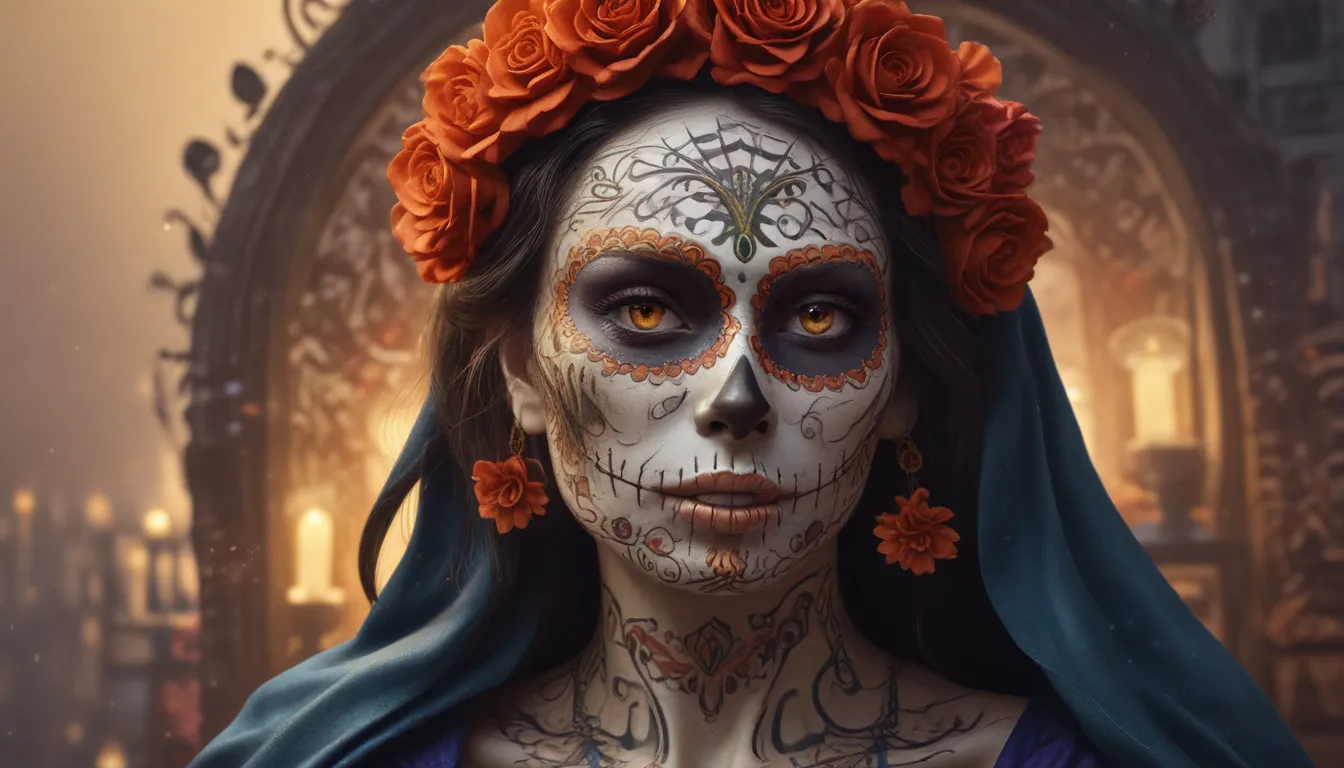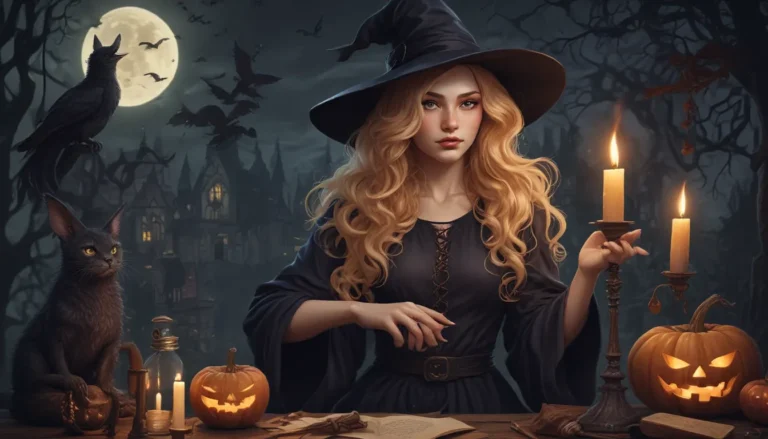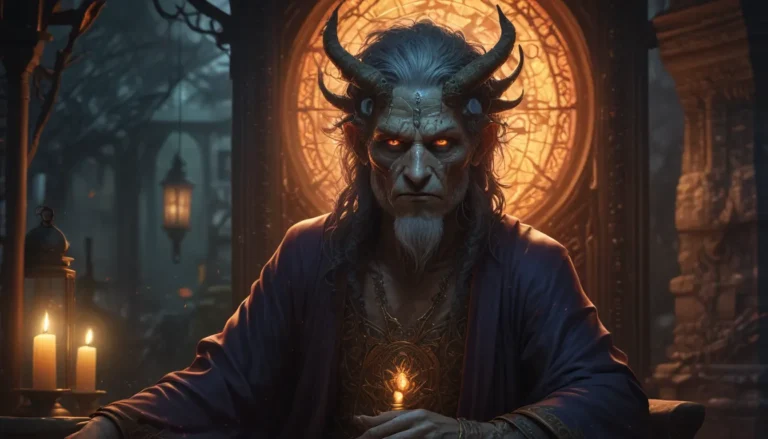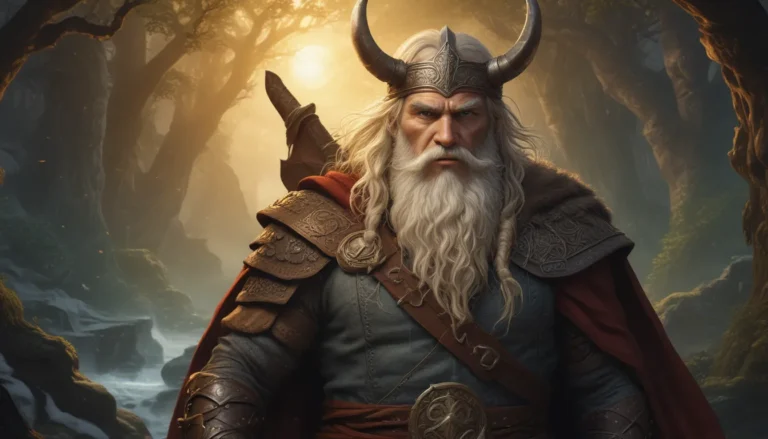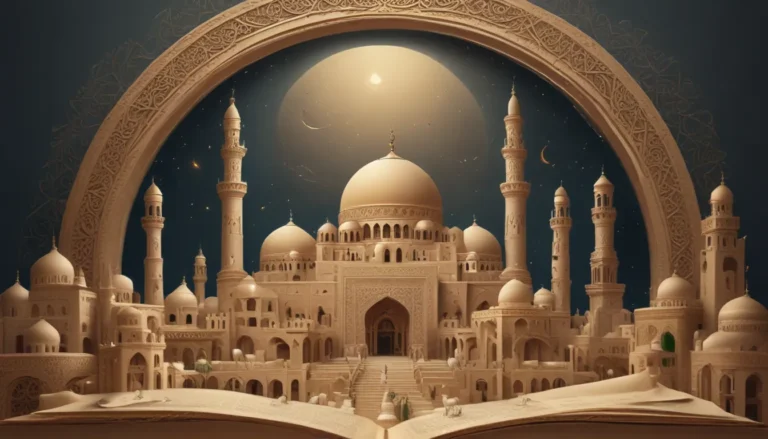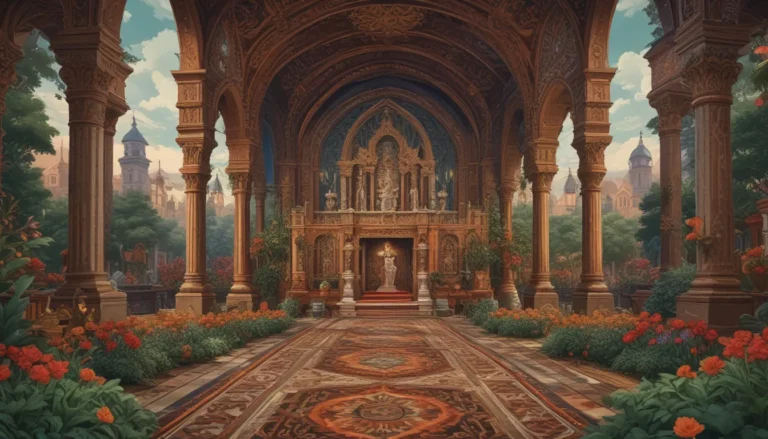The images in our articles may not match the content exactly. They are used to grab your attention, not to show the exact details in the text. The images complement the text but do not replace it.
In Mexican culture, the concept of death is not shrouded in sorrow but in vibrant celebration. The Day of the Dead is a unique tradition that fosters remembrance, unity, and honoring of departed loved ones. Let’s delve into the rich tapestry of facts surrounding this captivating cultural phenomenon.
Unmasking Misconceptions
Contrary to popular belief, the Day of the Dead is not synonymous with Halloween. While both holidays feature skeletal motifs and themes of death, the former is a multi-day celebration that spans from November 1st to November 2nd. In contrast, Halloween is a single nocturnal affair preceding All Saints Day.
Elemental Offerings
Central to the Day of the Dead tradition are the Ofrendas, or altars, which require strategic offerings encompassing the four elemental realms – wind, water, earth, and fire. These offerings symbolize spiritual nourishment for the departed, with each element playing a crucial role in guiding their souls back to the mortal realm.
Canine Companionship in the Afterlife
Legend has it that hairless dogs, known as Xoloitzcuintli or Xolos, serve as spiritual guides for the departed, guiding them safely back to the underworld. These revered creatures not only add a mystical touch to the festivities but also serve as symbolic companions on the ethereal journey of souls.
Face Painting Festivities
A common practice during the Day of the Dead celebrations is adorning oneself with intricate face paint. While skeletal motifs are prevalent, individuals are encouraged to personalize their designs to honor their loved ones uniquely. From elaborate skull patterns to colorful embellishments, face painting adds a whimsical touch to the commemoration.
Marigold Magic
Marigold flowers, with their vibrant hues and potent scent, play a pivotal role in guiding departed souls during the Day of the Dead. These aromatic petals create a fragrant path for spirits to traverse between the realms, symbolizing the ephemeral nature of life and death.
Culinary Commemoration
An integral part of the Day of the Dead festivities is the preparation of Pan de Muerto, or Bread of the Dead. This traditional sweet confection serves as a symbolic offering to the departed, embodying the essence of sustenance for the soul’s journey. Families often bake and share this treat as a gesture of remembrance and tribute.
Rethinking Mourning
Despite common misconceptions, the Day of the Dead is not a somber occasion for mourning. Rather, it is a vibrant celebration of life and an opportunity to commemorate cherished memories. By embracing death as a natural part of existence, participants believe they can keep the spirits of their loved ones alive in their hearts.
Symbolism in Sugar Skulls
Sugar skulls, or Calaveras, are intricately designed confections used to represent departed souls during the Day of the Dead. These edible art forms serve as joyful reminders of the lives once lived and evoke fond memories of the deceased. They symbolize the cyclical nature of life, death, and rebirth.
Spectacular Parade in Mexico City
Since 2016, Mexico City has hosted an annual Day of the Dead parade, showcasing elaborate skull imagery, vibrant colors, and captivating performances. This grand spectacle pays homage to the rich cultural heritage of the holiday and serves as a vibrant expression of unity and festivity.
Resonating Reunions
During the Day of the Dead celebrations, it is believed that the deceased return to the world of the living to revel in festivity and merriment. This symbolic bridge between the realms allows for joyous reunions, shared meals, music, and dancing, fostering a sense of connection and continuity.
Culinary Treasures: Tamales
Tamales, a cherished Mexican delicacy, take center stage during the Day of the Dead festivities. These steamed corn husk packages filled with savory delights hold cultural significance as communal offerings to honor the departed. Their presence on altars symbolizes sustenance for the soul’s journey.
Hanal Pixan in the Yucatan Peninsula
In the Yucatan Peninsula, the Day of the Dead goes by the name Hanal Pixan, meaning ‘nourishment for souls.’ This regional variation of the holiday retains the essence of remembrance and tribute, celebrated over three days with heartfelt rituals and communal gatherings.
Artistry in Decorations
Creativity abounds in the decorations crafted for the Day of the Dead, with vibrant paper creations adorning altars and gravesites. Intricate paper flowers, colorful banners, and symbolic motifs populate the festive landscape, each element imbued with cultural symbolism and artistic flair.
La Calavera Catrina: A Timeless Icon
At the heart of the Day of the Dead festivities stands the iconic figure of La Calavera Catrina, symbolizing elegance and the transformative power of death. Originally a satirical creation, this grand dame of the afterlife embodies the ethos of the holiday – embracing mortality with grace and vivacity.
Family Traditions: Altars at Home
For families unable to visit ancestral gravesites, home altars serve as sacred spaces for honoring departed loved ones during the Day of the Dead. These personalized shrines, adorned with photographs, offerings, and mementos, foster a sense of connection and remembrance within the familial sphere.
Refreshing Revelry: Jamaican Iced Tea
A popular beverage during the Day of the Dead celebrations is Jamaican iced tea, made from the flowers and leaves of the hibiscus plant. Known for its sweet and refreshing taste, this chilled concoction symbolizes renewal and vitality amidst the commemorative rituals of the holiday.
Aztec Roots of Remembrance
The origins of the Day of the Dead can be traced back to ancient Aztec traditions of honoring the deceased. Through offerings of food and water, the Aztecs sought to aid departed souls in their journey to the underworld. Over time, this venerable custom evolved into the vibrant celebration known as Dia de Los Muertos.
Conclusion
In conclusion, the Day of the Dead is a profound cultural tradition steeped in symbolism, artistry, and heartfelt remembrance. By commemorating the departed with joy, unity, and vibrant celebrations, participants honor the cycle of life and death with grace and reverence. As we unravel the mysteries and marvels of this unique holiday, we embrace the rich tapestry of Mexican culture and the enduring bonds that transcend the realms of the living and the dead. Let us celebrate, remember, and rejoice in the timeless spirit of Dia de Los Muertos.
